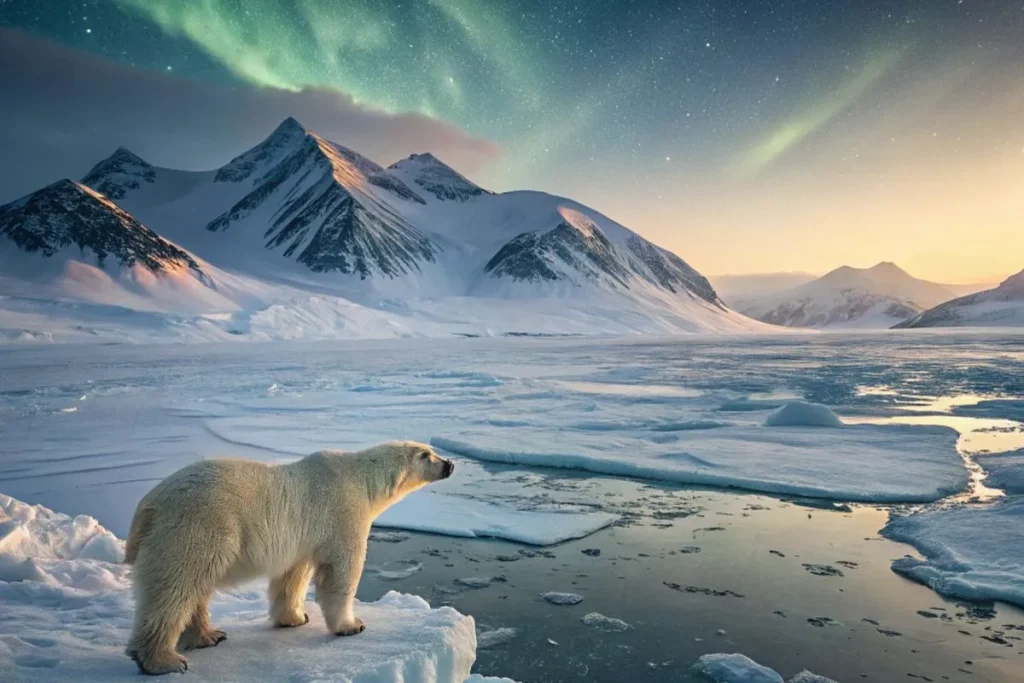- Introduction: Life on the Edge of Ice
- The Science of Surviving the Cold
- Masters of Insulation
- Staying Active When It’s Freezing
- The Art of Hibernation and Torpor
- Social Strategies for Warmth and Survival
- The Power of Color and Shape
- Hidden Life Beneath the Snow
- Marine Masters of the Frozen Seas
- Insects and Micro Life — The Tiny Survivors
- Lessons from the Frozen Wild
- Conclusion: The Enduring Spirit of Life in the Cold
Introduction: Life on the Edge of Ice
In the frozen corners of our planet — from the vast Arctic tundra to the icy expanse of Antarctica — life persists against all odds. Temperatures plummet far below freezing, winds howl across endless snowfields, and food becomes scarce for months on end. Yet, astonishingly, countless animals not only survive in these conditions but thrive.
The frozen wild is a stage where evolution’s most ingenious adaptations are revealed. Thick fur, antifreeze blood, layered fat, and even the ability to hibernate are nature’s tools for survival. These creatures endure the unimaginable, proving that life’s resilience knows no limits.
This article explores the secrets of the frozen wild, unveiling how animals adapt, evolve, and persist amid the coldest environments on Earth.
The Science of Surviving the Cold
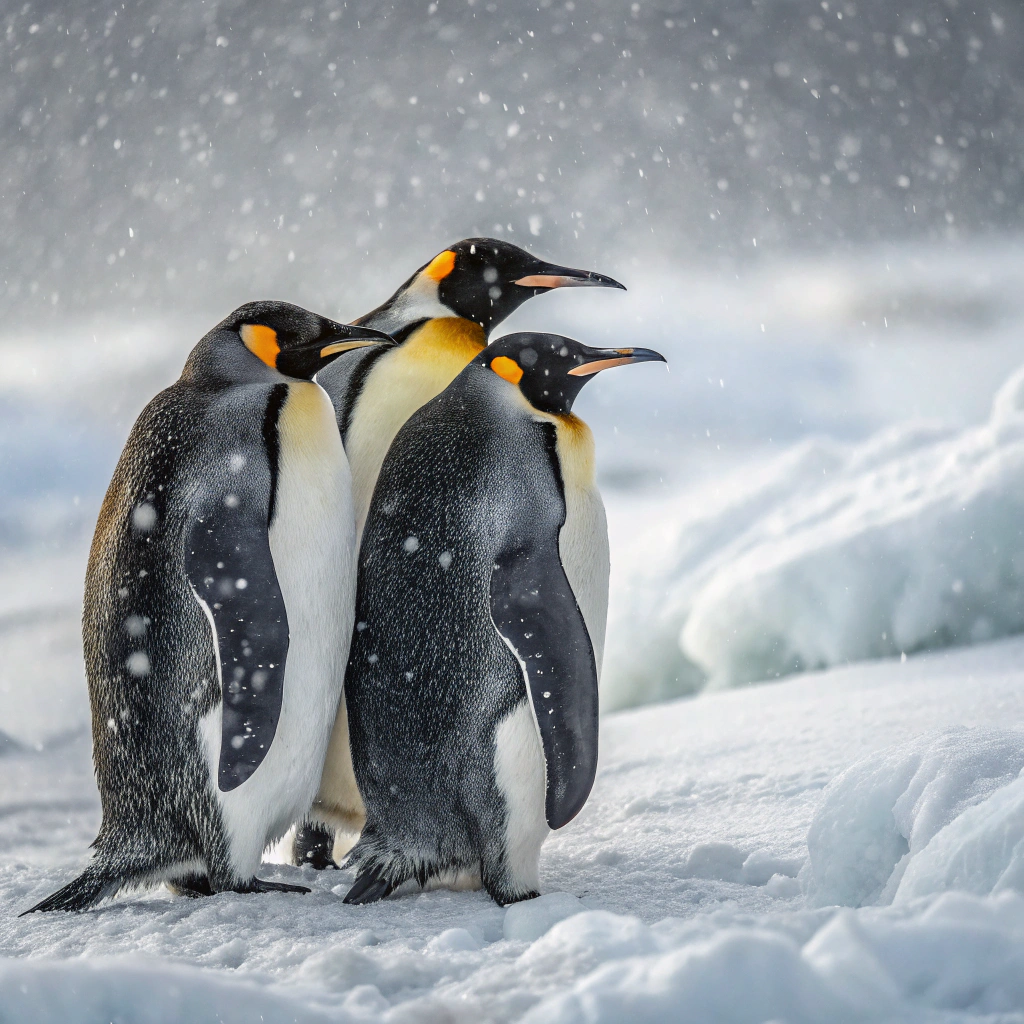
The Challenge of Low Temperatures
Cold poses two major threats to animals: freezing body fluids and loss of energy. When temperatures drop below zero, water inside cells can crystallize, destroying tissues. Meanwhile, staying warm consumes enormous amounts of energy — something scarce in frozen environments.
To survive, animals must balance heat production with heat loss. They’ve evolved countless physiological and behavioral strategies that let them endure what would kill most other life forms.
The Importance of Adaptation
Adaptation isn’t just about thick fur. It’s an entire suite of traits — from metabolic control to body structure — fine-tuned over millennia. Whether it’s a polar bear’s blubber, an Arctic fox’s compact body, or a penguin’s social behavior, every adaptation tells a story of survival in the ice.
Masters of Insulation
The Power of Fur and Feathers
Insulation is the first line of defense against the cold. Many mammals and birds have developed specialized coverings that trap air and retain body heat.
- Polar Bears: Their fur appears white, but each strand is actually transparent and hollow, allowing sunlight to reach their black skin beneath. This unique design traps heat efficiently.
- Arctic Foxes: They boast one of the warmest furs in the animal kingdom, changing from brown in summer to pure white in winter for camouflage and thermal efficiency.
- Snowy Owls and Emperor Penguins: Their feathers are dense, layered, and coated with natural oils that repel water while trapping warmth. Penguins even have an underlayer of down feathers that functions like a thermal wetsuit.
The Role of Fat and Blubber
For marine mammals like whales, seals, and walruses, fat is life. A thick layer of blubber beneath their skin acts as insulation, energy storage, and buoyancy aid.
Blubber can be up to 50 centimeters thick in some whales, helping them survive freezing ocean waters. It not only stores energy for lean months but also slows heat loss by providing a physical barrier between blood vessels and the cold.
Staying Active When It’s Freezing
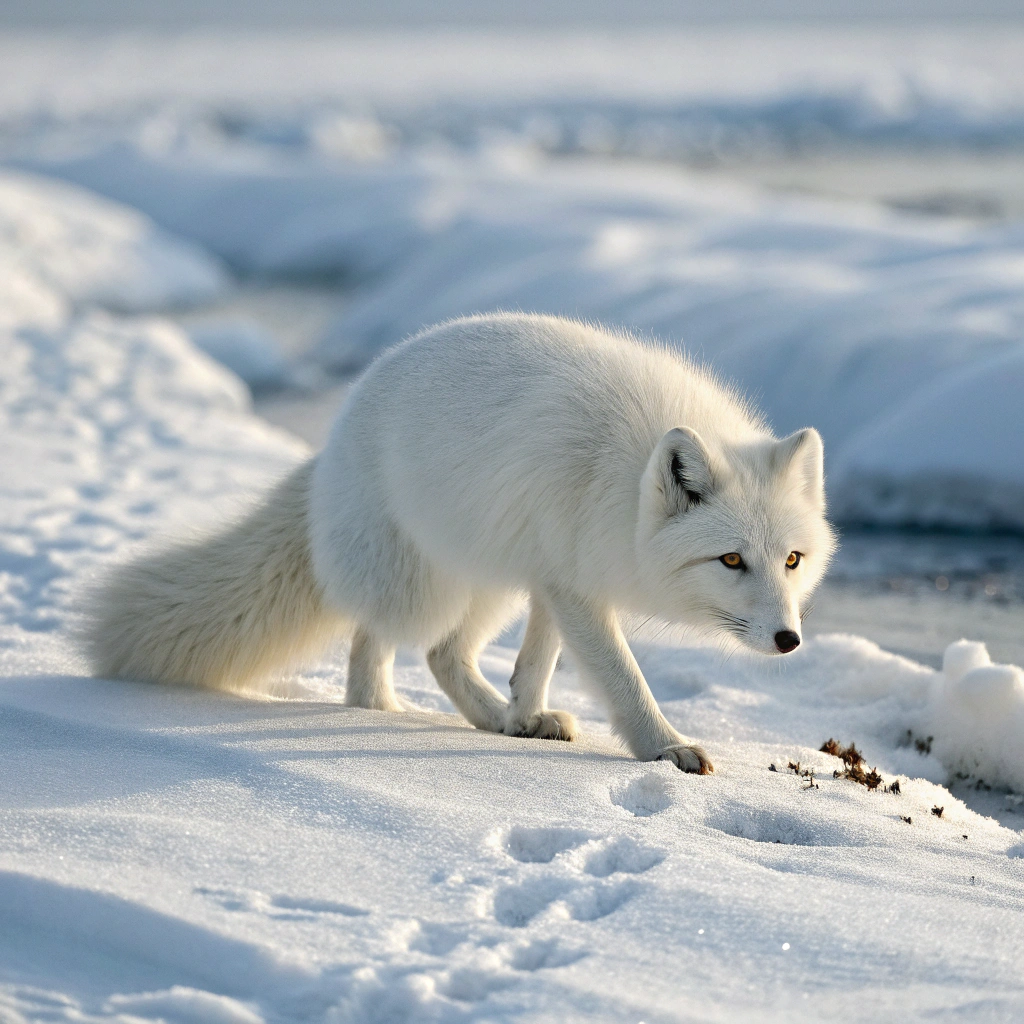
Constant Motion Keeps Warmth Alive
Movement generates heat, and in the frozen wild, activity is often the difference between life and death. Caribou constantly migrate to find food, while Arctic wolves hunt in coordinated packs to conserve energy.
Even small creatures like lemmings stay active under the snow, where a thin layer of air between the ground and snowpack traps warmth — creating a hidden subnivean world.
Migration: Following the Sun
Some animals escape the cold entirely. Migratory birds, for instance, follow the sun, flying thousands of kilometers to warmer climates each year. Arctic terns undertake one of the longest migrations known — traveling from the Arctic to Antarctica and back again, chasing endless summer.
This strategy may seem costly, but it ensures access to food and breeding grounds, preserving the species year after year.
The Art of Hibernation and Torpor
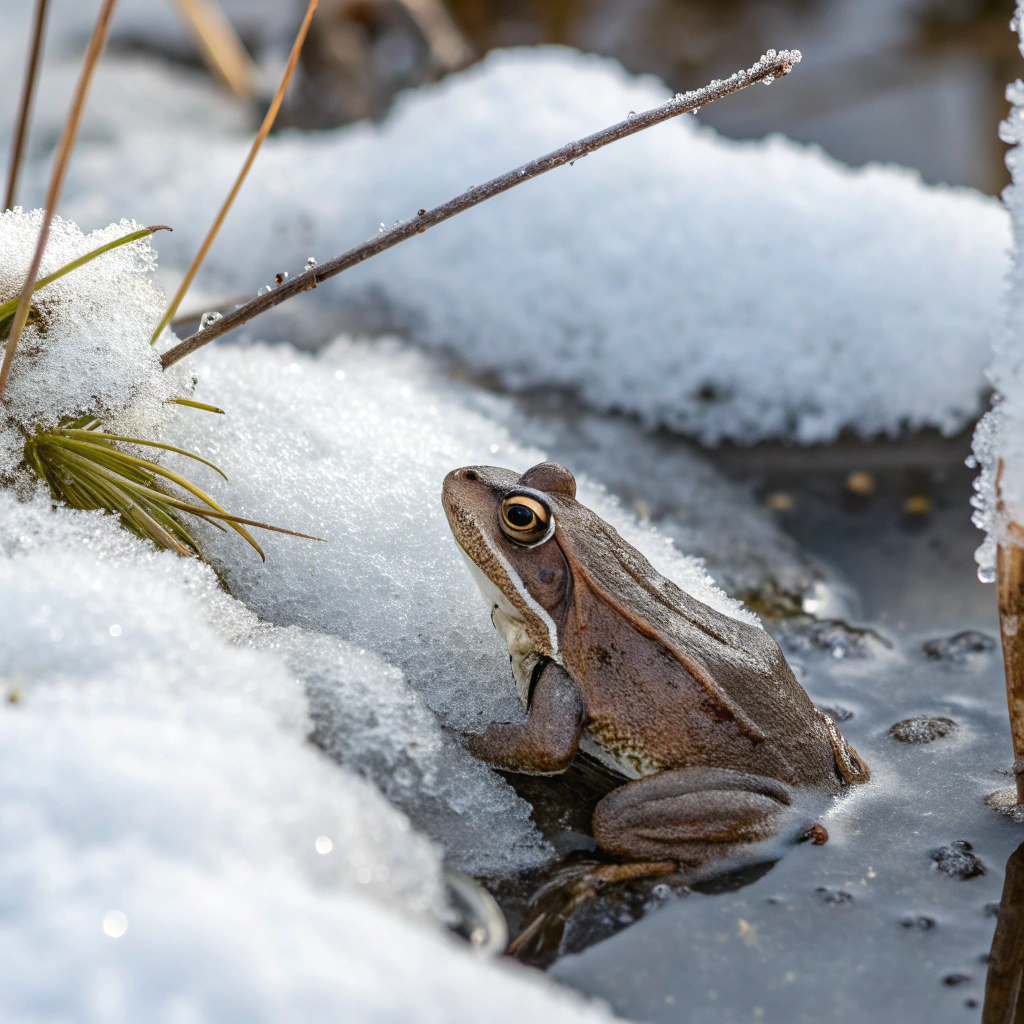
Energy Conservation at Its Finest
When food vanishes and temperatures drop too low, many animals turn inward — slowing down metabolism, lowering body temperature, and entering a state of hibernation or torpor.
- Bears: Contrary to popular belief, bears don’t fully hibernate; they enter a light state of dormancy where body temperature and heart rate drop, but they can awaken quickly if disturbed.
- Arctic Ground Squirrels: True hibernators, they lower their body temperature below freezing without their tissues crystallizing — an adaptation unique in the mammal world.
- Bats: In icy caves, bats survive months without eating by slowing their metabolism to nearly zero.
Supercooling: Nature’s Antifreeze
Certain insects, fish, and amphibians produce natural “antifreeze” compounds — special proteins and sugars that prevent ice crystals from forming in their cells.
- Wood Frogs: Found in North America, they can actually freeze solid during winter, stopping their heart and breathing. When spring arrives, they thaw and come back to life.
- Antarctic Fish (Notothenioids): Their blood contains antifreeze glycoproteins that prevent freezing in subzero seawater. This unique chemistry has inspired medical and industrial research worldwide.
Social Strategies for Warmth and Survival
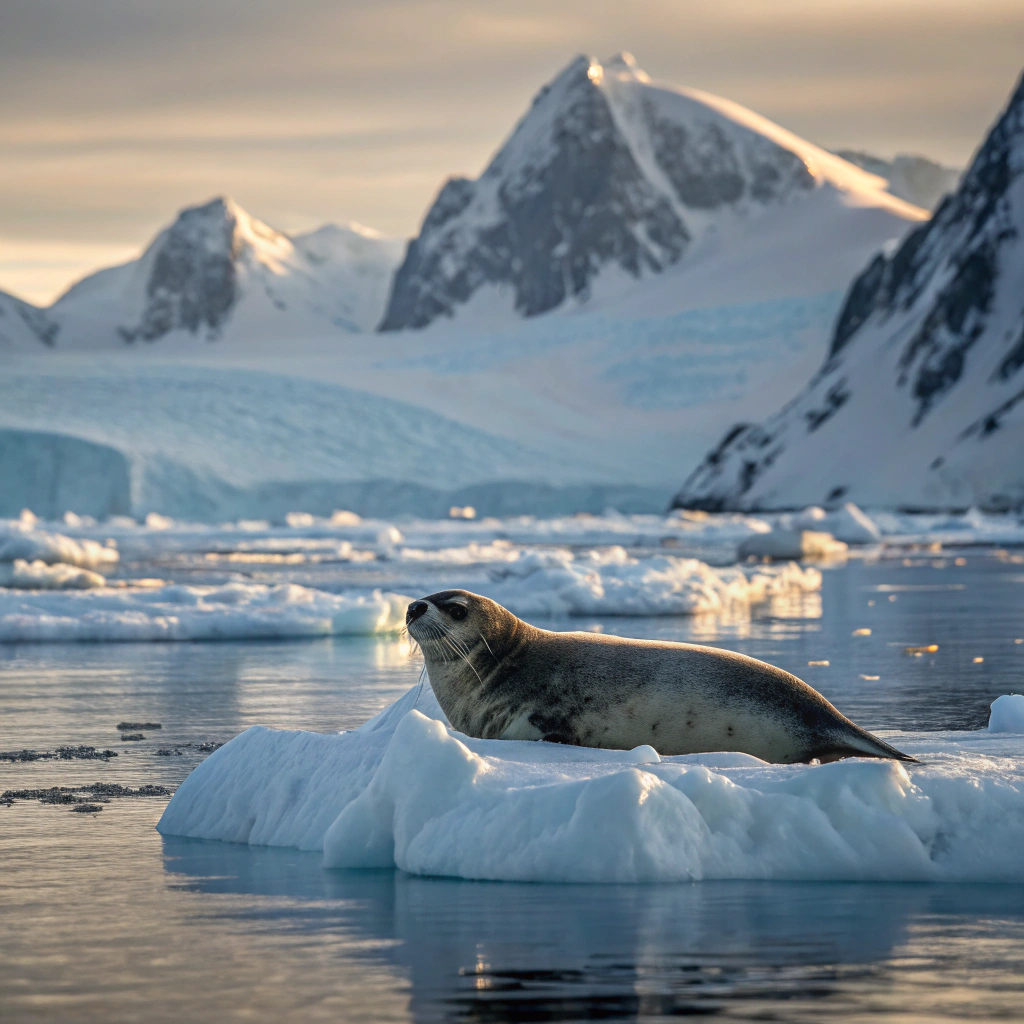
Strength in Numbers
In the frozen world, cooperation can mean survival. Many species rely on social thermoregulation — the act of huddling together to share body heat.
- Emperor Penguins: Perhaps the most iconic example, they form massive huddles of thousands of individuals during the Antarctic winter. Each bird takes turns on the freezing outer edge before rotating inward to warm up. This communal system allows them to incubate eggs through temperatures as low as -60°C.
- Musk Oxen: These Arctic herbivores form tight circles, their thick coats touching to block the wind and protect calves at the center.
Communication in the Cold
Sound travels differently in frozen air, so animals have evolved unique ways to communicate. Wolves howl to coordinate over long distances. Penguins use distinct calls to recognize mates among thousands. Seals sing haunting underwater songs that echo beneath the ice — part of courtship and territory defense.
The Power of Color and Shape
Compact Bodies, Short Limbs
Shape plays a crucial role in thermoregulation. According to Bergmann’s Rule, animals in colder regions tend to have larger bodies to conserve heat, while Allen’s Rule suggests they have shorter limbs and ears to minimize heat loss.
For instance:
- Arctic foxes have small ears and rounded bodies to trap heat.
- Polar bears’ large size helps reduce surface area exposure relative to body mass.
- Snow hares and lemmings are compact, minimizing extremities where heat could escape.
The Camouflage Advantage
Coloration is another adaptation. White fur or feathers serve two purposes — camouflage and thermal regulation. By blending into snowy environments, predators like polar bears and snowy owls can approach prey unseen, while prey species avoid detection.
Interestingly, some animals, like the stoat and ptarmigan, change color with the seasons — brown in summer, white in winter — an elegant evolutionary solution to surviving all year long.
Hidden Life Beneath the Snow
The Subnivean Zone — A Secret Refuge
Underneath the snow lies a little-known habitat called the subnivean zone — the small air space between the ground and the snow layer. Despite freezing temperatures above, this zone maintains a stable environment close to 0°C.
Here, mice, voles, and shrews create tunnels, feed on stored seeds, and remain hidden from predators. The snow acts like an insulating blanket, protecting them from the deadly cold and harsh winds.
Predators Above the Snow
While small mammals hide beneath, predators such as foxes and owls have developed keen senses to detect movement under the snow. An Arctic fox can pinpoint prey by sound alone, leaping and diving headfirst through the snow to capture its meal — a dramatic display of adaptation in action.
Marine Masters of the Frozen Seas
Seals, Whales, and Walruses
The ocean’s icy surface hides an entire ecosystem. Beneath the ice, life flourishes in surprising abundance. Marine mammals survive through blubber insulation, specialized circulation, and adapted diving techniques.
- Seals: Can close off blood flow to their skin and extremities to conserve heat.
- Whales: Use countercurrent heat exchange — a system where warm blood heats the cold blood returning from flippers — maintaining stable internal temperatures.
- Walruses: Use their wrinkled skin and thick fat to withstand both freezing air and icy waters, diving deep for clams and crustaceans.
Penguins — Champions of the Cold
Emperor penguins are living proof that evolution favors cooperation. Their huddling behavior, waterproof feathers, and insulating fat allow them to endure months without feeding. They balance eggs on their feet under a warm brood pouch, ensuring life continues even in the harshest winter on Earth.
Insects and Micro Life — The Tiny Survivors
Insects That Defy the Cold
Even small creatures have found ways to endure the freeze. Arctic woolly bear caterpillars, for instance, freeze solid each winter and thaw in spring, repeating the cycle for up to 14 years before finally metamorphosing into moths.
Certain beetles and flies produce glycerol, acting like natural antifreeze, keeping their bodily fluids from crystallizing. These micro-survivors demonstrate that resilience isn’t limited by size.
Microbes Beneath the Ice
Beneath glaciers and permafrost, bacteria and microbes persist in ancient frozen lakes. Some have remained dormant for thousands of years, awakening when thawed. Their survival mechanisms — slowed metabolism, antifreeze proteins, and DNA repair systems — may hold clues to life beyond Earth.
Lessons from the Frozen Wild
Adaptation as Inspiration
The way animals survive the cold doesn’t just amaze scientists — it inspires technology and innovation. Antifreeze proteins are being studied for preserving organs and improving frost resistance in crops. Arctic animal insulation has influenced thermal clothing design and architecture in extreme environments.
The Fragile Balance of Survival
But this icy world is changing. Climate change threatens the delicate equilibrium that these species depend on. Melting ice, shifting seasons, and disappearing prey challenge animals that have spent millennia adapting to stability.
The same traits that once ensured survival — thick fur, migration timing, hibernation cycles — now face disruption. Polar bears hunt longer for shrinking sea ice; penguins lose breeding grounds; and permafrost ecosystems vanish faster each year.
Conclusion: The Enduring Spirit of Life in the Cold
In the frozen wild, survival is both art and science — a balance of instinct, adaptation, and resilience. From microscopic bacteria beneath glaciers to the mighty polar bear roaming ice floes, life in the cold proves that nature’s creativity knows no limits.
Every breath, every heartbeat, and every adaptation tells a story of determination. These creatures remind us that survival isn’t just about enduring the cold — it’s about mastering it.
As we face a warming planet, understanding the secrets of the frozen wild becomes more important than ever — not only to protect these remarkable beings but to learn from their astonishing will to live.
